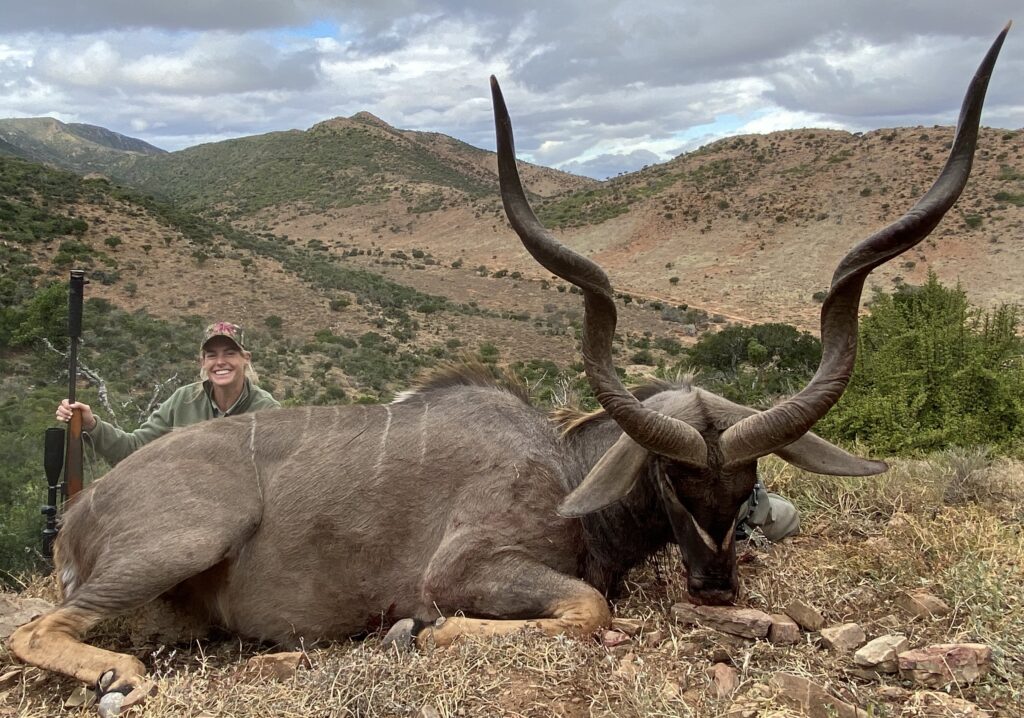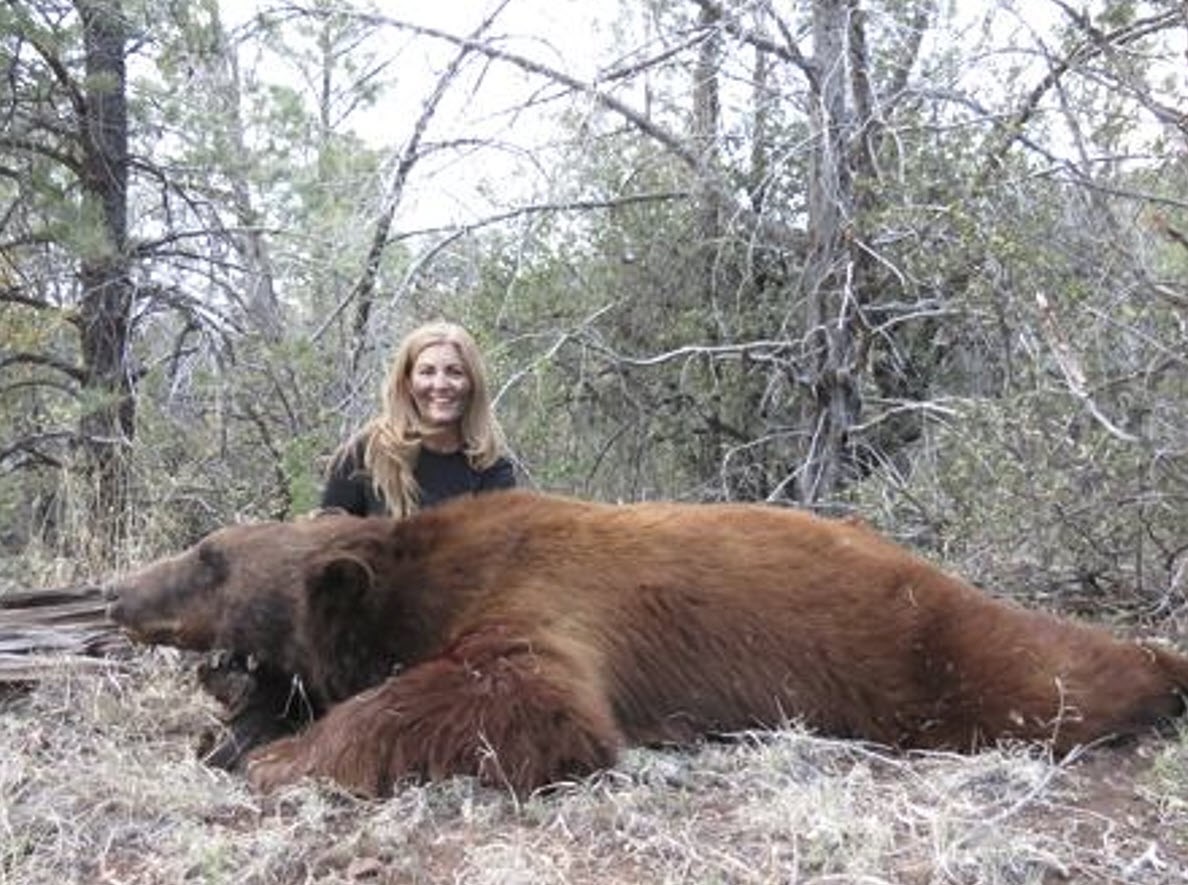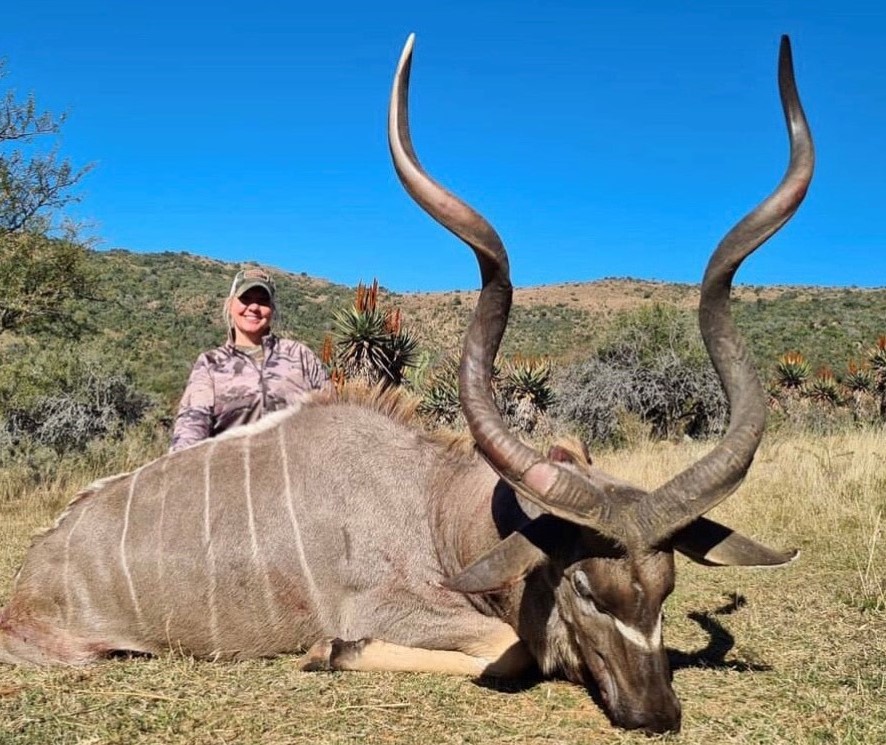I grew up hunting whitetail deer in Mississippi. I never hunted anything outside of that until my brother asked me to join him on a hunting safari in South Africa. I jumped on the opportunity! He won the hunt at the SCI Convention – nine days at the Royal Karoo hunting black and common springbok, steinbok and kudu. My brother let me hunt the kudu and springboks, and he took the steinbok.
The safari was very different from what I expected, and I loved it! We hiked up and down and along the mountain ranges looking for the kudu and down in the plains for the springboks. Very different from what I was used to–hunting deer in tree stands. The kudu hunt was the most challenging and exhilarating experience. We hunted kudu for several days. It was towards the end of the hunting season, so they were clever and very good at hiding. The morning of our last full day, the professional hunter (PH) spotted a kudu about 600 meters away, and we began to stalk it.
We almost got a shot at the bull, but then he bedded down for the morning. It was a cold morning (around 45 degrees F) with very cloudy skies. The PH suspected the bull would get hungry and start grazing in an hour or two, so we waited. Finally, the bull picked his head up just enough for us to see the horns. I got on the shooting sticks and found the horns through the scope. The PH told me to keep my eyes on the bull, because it would be difficult to find him again. We waited for the bull to get into a position where we could see his body. Twice the PH walked a few feet away looking for a better angle on the bull, while I kept my eye on the horns. Thirty minutes passed, and we were in the same position–standing on the side of the windy mountain with the rifle on the sticks and my face on the scope, hoping the kudu would take another two steps to give me a clear shot.
The kudu bull ate steadily from behind brush that blocked all but his horns. Eventually, he took a step, and I could see his face and the full length of his mane. Everything else was covered by brush. Another 10 minutes passed. The PH stood on my left side with his arm bent underneath mine to provide extra support. We tried to resist shaking from muscle fatigue caused by holding the same position so long and from the cold air whirling all around us. We were tempted to take a neck shot. Then at the last second, the PH said “No, let’s not risk it. We’ve waited too long to risk missing it on a neck shot.”
We waited another five minutes. It felt like 20. Then the bull took one more step, and I could see where the top of his neck met the top of his back, and I could also see his butt; everything else was covered by brush. The PH talked me through lining up a shot by drawing imaginary lines down from the point on his neck and across from his rear end and in line with a distinct change in the coloring of the brush that covered the bull’s shoulder. We waited for a strong gust of wind to die down, and then I took the shot through the thin layer of brush. The bull reacted the way we hoped. We followed some tracks and put the dog on the trail. We found the bull shortly after, with a broken shoulder, and I took one more shot to complete the mission.
It was the most rewarding hunt because of the effort and time we put into finding him, walking up and down and along the mountain ranges, sitting atop a cold and windy mountain waiting for the kudu to move again, and standing on the shooting sticks with my eye to the scope for what felt like an hour. The safari was a fantastic experience, and I look forward to doing it again. – Ramsey Wagner




